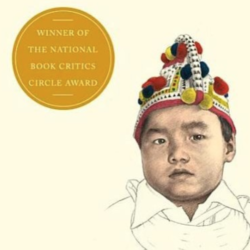The author did a fantastic job presenting both sides of the story. From the Hmong perspective, it might be easy to think that the Doctors aren’t trying to help at all. Fadiman did a great job displaying the intentions and motivation behind the actions that Lia’s Doctors took. It is evident that she was thorough in interviewing both the Lee family and the Hmong community, as well as Lia’s care providers and the MCMC (Merced Community Medical Clinic) medical community. It is unclear if the author got anything factually wrong. Most of the story relies upon interviews with the family and the clinic staff conducted by the author and thus there would be no way to determine if the stories are true. However, given the strong reputation of Anne Fadiman as a journalist and author, the reader should be heavily inclined to take the narrative as truth. Fadiman is accurate and detailed in her digressions about the Hmong people and their history in China and Laos.
I think people would really enjoy this book. The book is crafty in its juggling act between the Lee Family perspective and the MCMC perspective. Due to the diligent research and interviewing by the author, the reader is privy to all of the relevant cultural competencies that allow for a sympathetic view of the Lee’s handling of their daughter’s epilepsy. On the other hand, the reader is also able to understand the persistence with which Lia’s physicians push modern medicine on Lia. Fadiman does a fantastic job in allowing the reader to understand that both sides can be right and wrong at the same time. I can see how some physicians would take exception to this book. There is basically no training in Medical school for how to deal with patients from a different culture that do not believe in modern medicine. It is not in the job description and a Doctor would have to go above and beyond to provide proper care (which they should!).
The main lesson I learned from this book has to do with Medical Anthropology. I am now more inclined to believe that a patient’s history must contain cultural information. This information can have a direct effect on the patient’s treatment plan. Neil, Lia’s doctor, wondered if he should lower the quality of care he provides Lia so that it would improve her health outcomes. For a non-Hmong patient, he might continuously alter and update the drug regimen to best treat the epilepsy. Changing Lia’s medication scared her parents and they would be more hesitant to give Lia her medication. This dilemma is not something I would encounter in a textbook or lecture and I believe this is just one example of how this book will positively impact my professional career.

